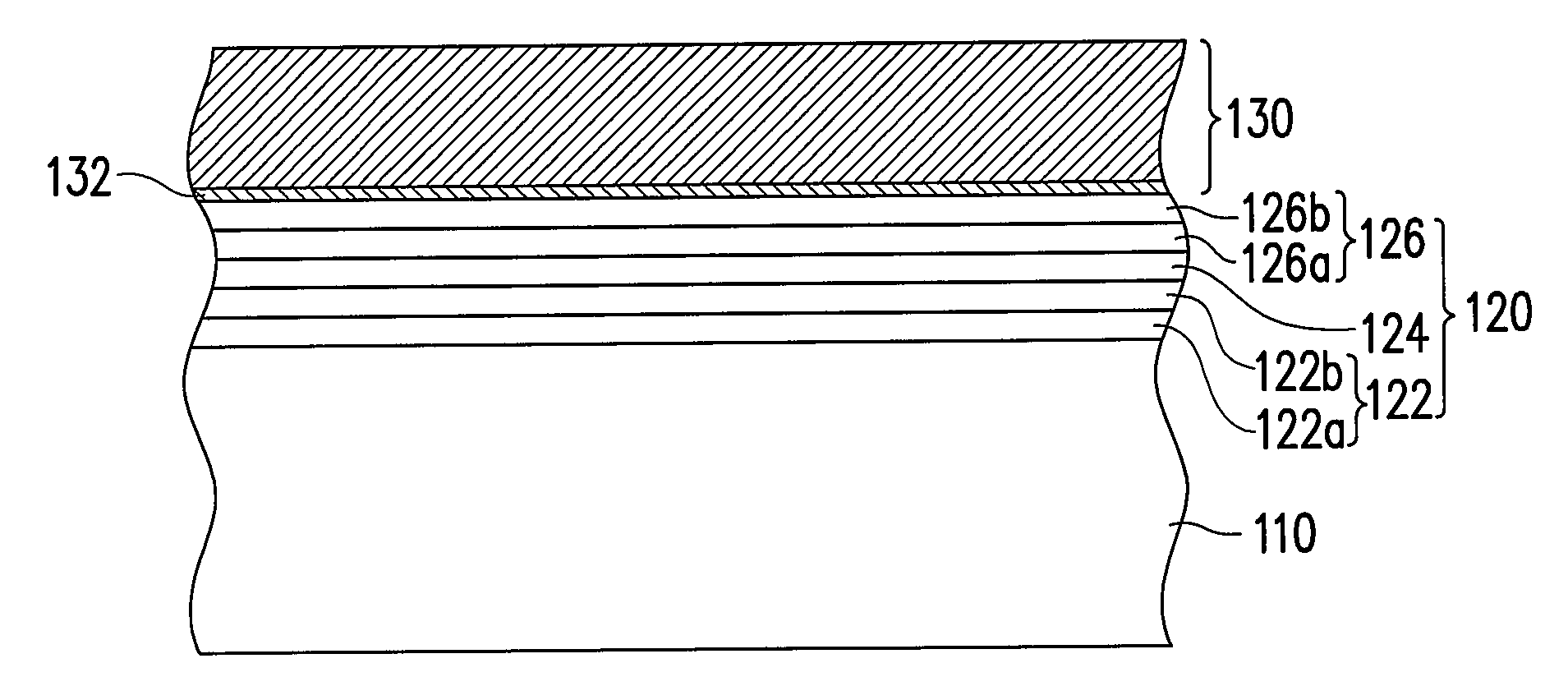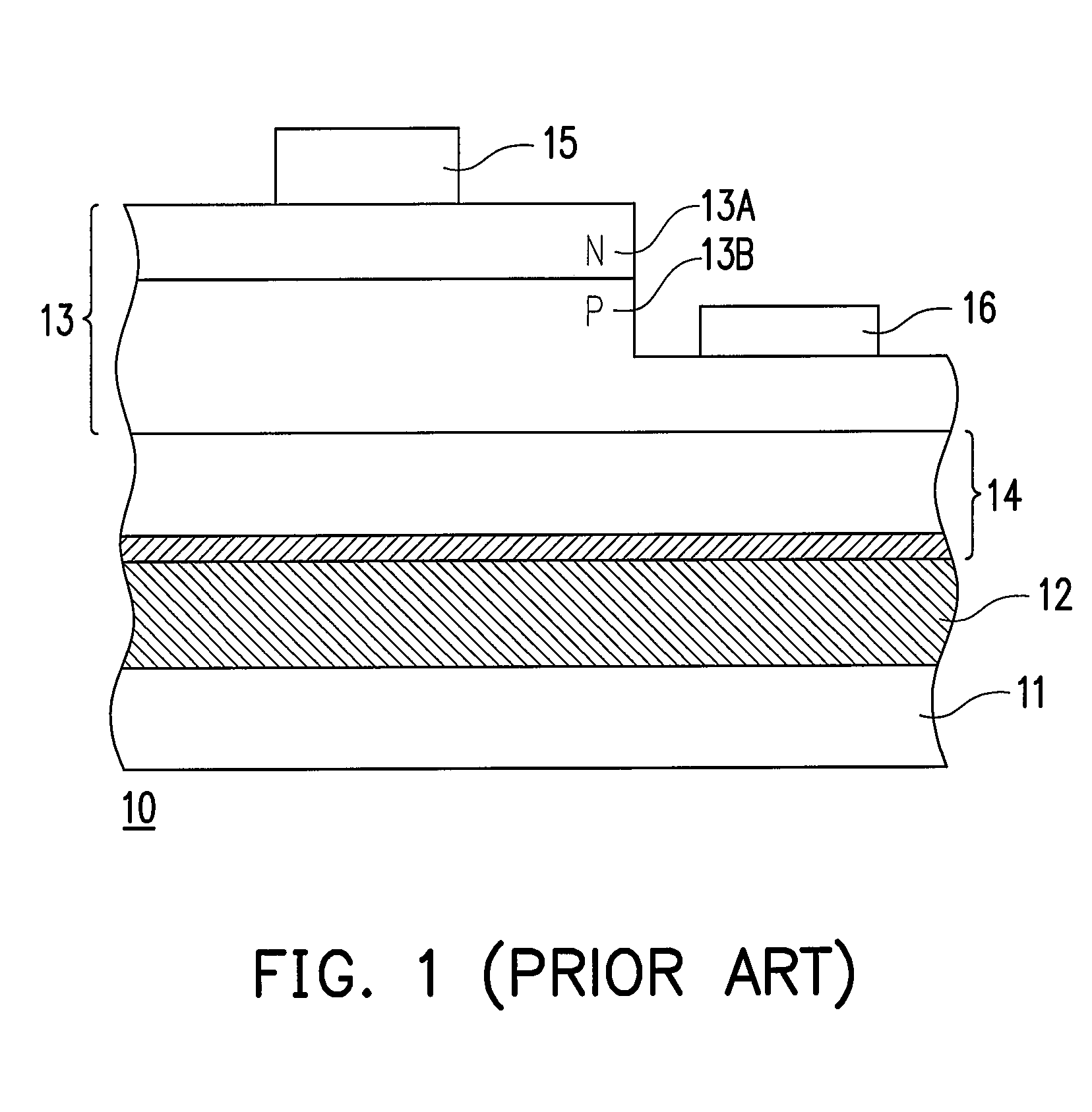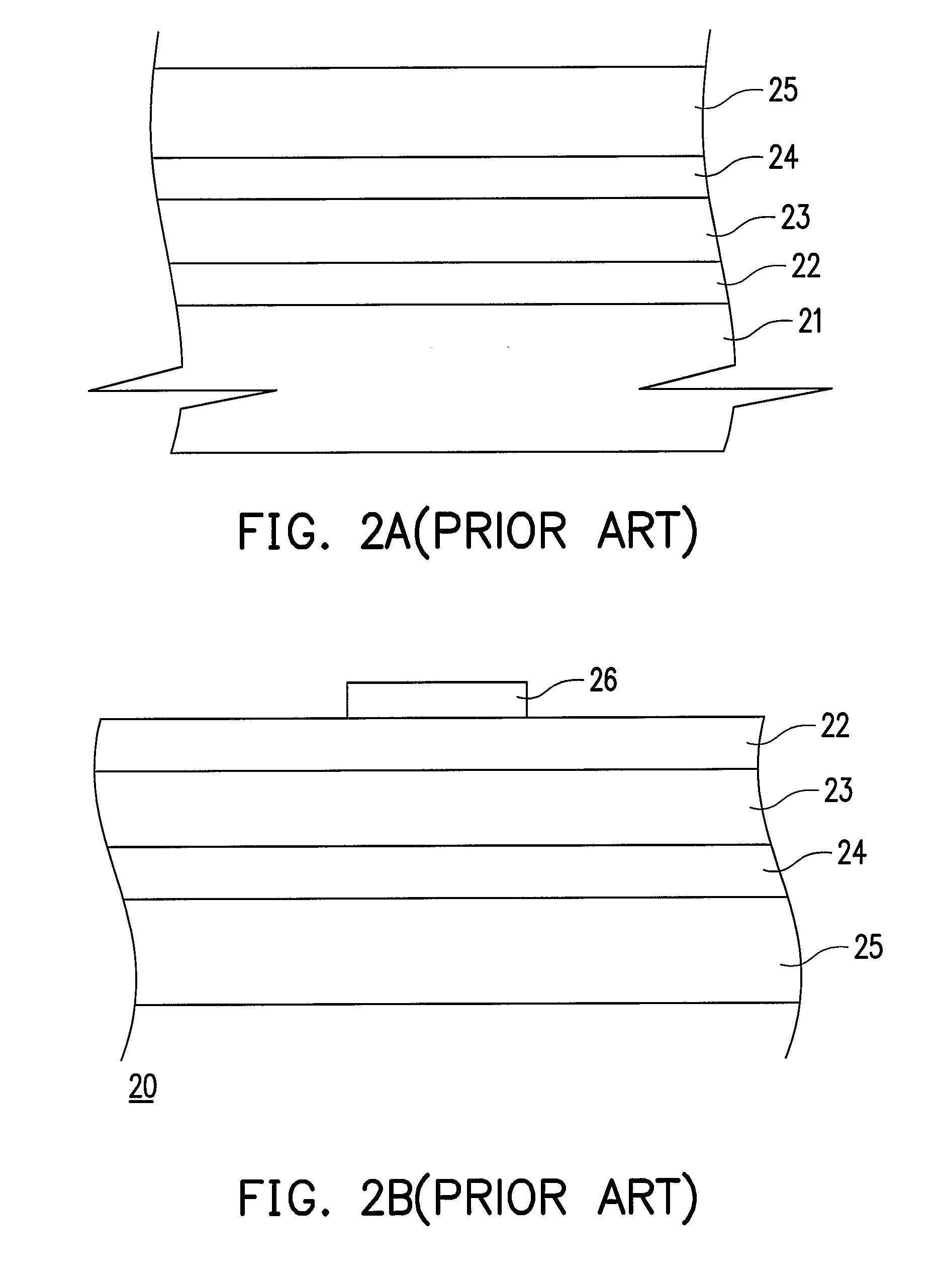Substrate-free light emitting diode and fabrication method thereof
a technology of light-emitting diodes and substrates, which is applied in the manufacture of semiconductor/solid-state devices, semiconductor devices, electrical devices, etc., can solve the problems of shortened service life of leds, inability to develop miniaturized displays employing leds, and inflexible led dies, so as to avoid the light shielding effect of electrodes and improve the front light-emitting efficiency of leds
- Summary
- Abstract
- Description
- Claims
- Application Information
AI Technical Summary
Benefits of technology
Problems solved by technology
Method used
Image
Examples
Embodiment Construction
[0044]FIGS. 3A-3F are cross-sectional views of the process of a substrate-free light emitting diode (LED) according to one preferred embodiment of the present invention. First, referring to FIG. 3A, a template substrate 110 is provided. Since the template substrate 110 will be removed once the desired element has been fabricated, all substrates that can grow a favorable epitaxy layer structure can serve as the template substrate 110. The material employed by the template substrate 110 includes semiconductor or non-semiconductor materials, such as, Si, glass, GaAs, GaN, AlGaAs, GaP, SiC, InP, BN, Al2O3, sapphire or AlN.
[0045]Subsequently, referring to FIG. 3A, a first type doped semiconductor layer 122, a light emitting layer 124, and a second type doped semiconductor layer 126 are formed on the template substrate 110 in sequence. Overall, the first type doped semiconductor layer 122, the light emitting layer 124, and the second type doped semiconductor layer 126 can be called collec...
PUM
 Login to View More
Login to View More Abstract
Description
Claims
Application Information
 Login to View More
Login to View More - R&D
- Intellectual Property
- Life Sciences
- Materials
- Tech Scout
- Unparalleled Data Quality
- Higher Quality Content
- 60% Fewer Hallucinations
Browse by: Latest US Patents, China's latest patents, Technical Efficacy Thesaurus, Application Domain, Technology Topic, Popular Technical Reports.
© 2025 PatSnap. All rights reserved.Legal|Privacy policy|Modern Slavery Act Transparency Statement|Sitemap|About US| Contact US: help@patsnap.com



